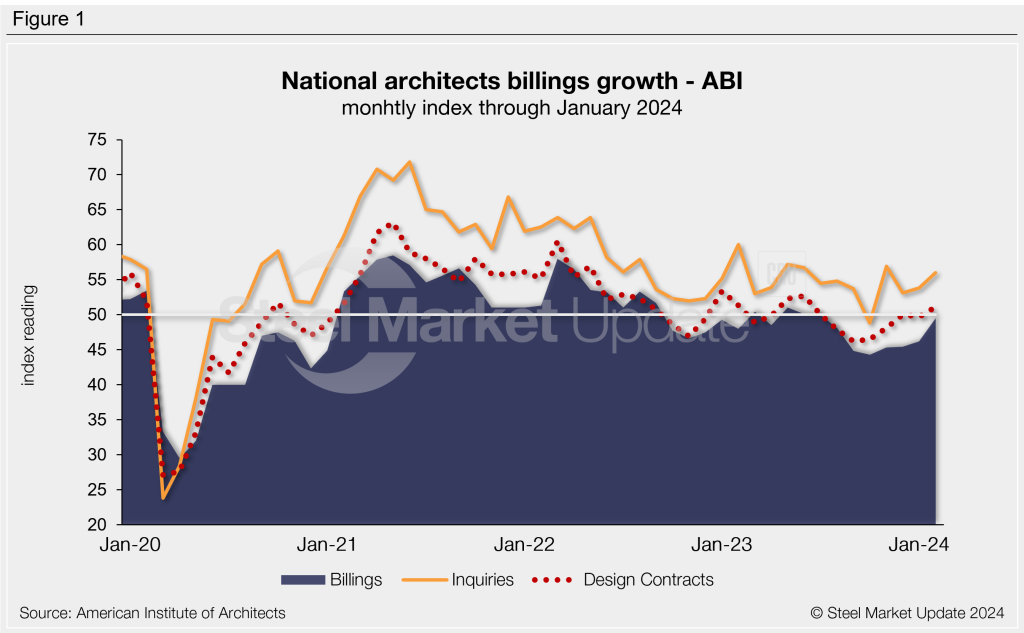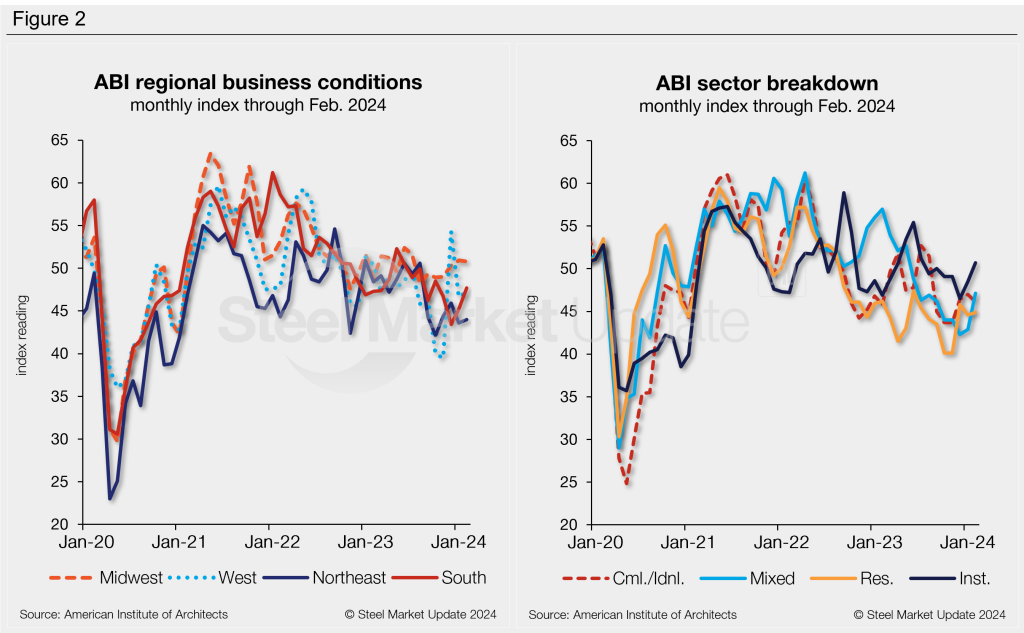Economy

Modest decline in Architecture Billings Index hints at receding slowdown
Written by Brett Linton
March 21, 2024
The Architecture Billings Index (ABI) indicated architecture firm billings continue to decline through February, according to the American Institute of Architects (AIA) and Deltek. While the latest reading does not indicate improving business conditions, it is one of the higher measures seen in recent months, suggesting the recent slowdown may be diminishing.
The February ABI score of 49.5 is now the highest rate recorded since August. While the index has moved higher consecutively each month since October, it has remained in contraction territory since August. This time last year the index was 48.0, while two years prior it was 51.3.
“There are indicators this month that business conditions at firms may finally begin to pick up in the coming months. Inquiries into new projects grew at their fastest pace since November, and the value of newly signed design contracts increased at their fastest pace since last summer,” said AIA chief economist Kermit Baker.
The ABI is a leading economic indicator for nonresidential construction activity, projecting business conditions approximately 9-12 months into the future. Any score above 50 indicates an increase in billings, while a score below 50 indicates a decrease.

“Given the moderation of inflation for construction costs and prospects for lower interest rates in the coming months, there are positive signs for future growth,” Baker added.
The project inquiries index rose 2.2 points to 56.0 in February, now up to a three-month high. The design contracts index increased by 1.4 points to 51.1, the highest score seen since last June.
Results remained mixed across the country. The Northeastern, Western and Southern region indices all inched up from January but still remain in contraction territory. The Midwestern index saw a slight decline, but continues to indicate improving business conditions for the third consecutive month.


Brett Linton
Read more from Brett LintonLatest in Economy

Durable goods orders rise again in February
Transportation equipment led the increase, rising 1.5% to $98.3 billion.

Consumer confidence falls for fourth consecutive month
People remain concerned about inflation, trade policies, and tariffs.

Housing starts ticked up in February
Single-family starts last month hit a rate of 1.10 million, a month-over-month increase of 11.4%, census data shows.

Architecture billings continued to slide in February
The ABI is a leading indicator for near-term nonresidential construction activity and projects business conditions ~9-12 months down the road (the typical lead time between architecture billings and construction spending).

New York state manufacturing activity tumbles in March
After a modest recovery in February, business activity in New York state’s manufacturing sector declined sharply in March, according to the latest Empire State Manufacturing Survey from the Federal Reserve Bank of New York.
